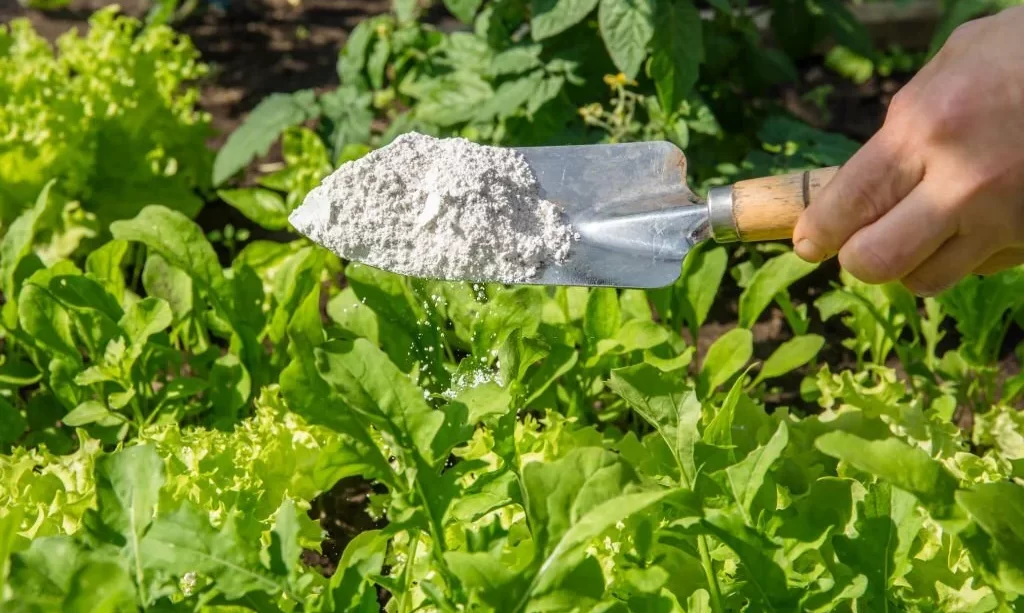In the world of gardening and pest control, diatomaceous earth (DE) has garnered a reputation as a versatile and natural solution. Derived from the fossilized remains of tiny aquatic organisms called diatoms, DE is a powdery substance that holds significant promise for both plant enthusiasts and those seeking effective pest management. However, its use raises a critical question: Is diatomaceous earth safe for plants? To shed light on this inquiry, we embark on a journey to explore the intricacies of DE’s relationship with the plant world.
- PEST-KILLING DUST: Use indoors or outdoors to control listed crawling insects on contact
- CONTAINS DIATOMACEOUS EARTH: Insects encounter or ingest this powder and die within 24 hours – insects don’t become immune to its killing action
- CONTROLS: Kills cockroaches, ants, silverfish, beetles, fleas, bed bugs and other crawling insects as listed
- NO ODOR, NON-STAINING: Use a hand duster, power duster or squeeze bottle to dust areas where crawling insects are found
- USE AS NEEDED: Dust insects directly if possible; reapply when dust is no longer present and if insects are observed
Diatomaceous Earth
To comprehend the safety and potential benefits of diatomaceous earth for plants, we must first delve into its nature and origins.
Ancient Origins: Diatomaceous earth, often referred to as DE, is a naturally occurring sedimentary rock formed over millions of years. Its primary constituents are the fossilized shells of diatoms, minute aquatic creatures that lived in ancient oceans and lakes. These diatoms left behind intricate silica skeletons that, over time, accumulated and solidified into the substance we now know as DE.
Remarkable Properties: DE is characterized by its fine, abrasive texture, akin to powdered glass. This unique quality is the key to its multifaceted utility. It’s important to note that DE can be classified into two primary categories: food-grade and industrial-grade. Food-grade DE, which is specifically processed for safe use around humans and animals, is the variety commonly employed in gardening.
Versatile Applications: Diatomaceous earth has found its way into numerous applications. One of its primary uses is as a natural insecticide. DE’s microscopic, razor-sharp particles can pierce the protective exoskeletons of insects, leading to desiccation and ultimately, their demise. Additionally, DE acts as an effective soil conditioner, enhancing aeration and drainage, which benefits plant roots. Its porous structure also makes it valuable for filtration in various industrial processes.
As we embark on our exploration of DE’s compatibility with plants, understanding its natural origins and remarkable properties sets the stage for a deeper dive into its role in gardening and pest control.
Diatomaceous Earth as an Insecticide
Diatomaceous earth’s role as a natural insecticide is one of its most celebrated applications in gardening and plant care.
Mechanism of Action: DE’s effectiveness as an insecticide lies in its unique mode of action. When insects come into contact with DE, the microscopic sharp edges of its particles inflict tiny cuts and abrasions on their waxy exoskeletons. This seemingly innocuous encounter leads to a slow but sure process of desiccation, where the insect loses vital moisture and ultimately succumbs to dehydration. Importantly, DE’s action is entirely mechanical and does not involve chemical toxins, making it an eco-friendly pest control option.
Versatile Pest Control: DE’s efficacy extends to a wide range of garden pests, including ants, aphids, beetles, slugs, and even crawling insects like cockroaches. Gardeners often use it as a barrier around plants or apply it directly to pests for targeted control.
Safety for Beneficial Insects: One significant advantage of DE is that it generally spares beneficial insects like ladybugs, earthworms, and pollinators. These helpful garden allies often have thicker exoskeletons that are less susceptible to DE’s abrasive action.
DE as a Soil Amendment
Beyond its role as an insecticide, diatomaceous earth offers valuable benefits as a soil amendment, enhancing the health of plants and their root systems.
Improving Soil Structure: DE’s fine particles are renowned for their ability to improve soil structure. When incorporated into the soil, DE increases aeration, allowing roots to access oxygen more readily. Improved soil structure also enhances drainage, reducing the risk of root rot and other water-related issues.
Disease Prevention: DE’s porous nature aids in preventing fungal diseases like powdery mildew by absorbing excess moisture and creating a less favorable environment for pathogens.
Root Health: Healthy root systems are the foundation of thriving plants, and DE contributes to this by promoting root growth and vitality. By mitigating compaction and ensuring proper aeration, DE provides an optimal environment for roots to expand and absorb essential nutrients.
Safe for Edible Plants: Food-grade diatomaceous earth is safe to use around edible plants. Gardeners often incorporate it into their vegetable gardens to improve soil quality while simultaneously providing natural pest control.
In essence, diatomaceous earth’s dual roles as an insecticide and soil amendment make it a versatile and eco-friendly companion in gardening. Its mechanical mode of action as an insecticide ensures minimal harm to beneficial insects, while its ability to enhance soil structure and promote root health contributes to the overall well-being of plants. Understanding these facets of DE enables gardeners to harness its potential for both pest management and plant growth.
- Diatomite is a naturally occurring compound made up of prehistoric diatomic fossils. Fantastic additive for succulent and cactus soil. Use as Bonsai Substrate alone or with another substrate – 2 QUART BAG
- 🌱 Durable and Long-lasting! Won’t break down in soil for approx. 2 years. Non-toxic and Pet Safe. Put in your outdoor plants to keep slugs away
- 💧 Add to any potting mix for drainage. Give your soil structure for roots to grab on to and grow!
- ✅ This products has been triple washed and heated to make sure there is no pathogen transfer and to minimize dust. Environmentally Friendly! Organic / No Added Chemicals / Cruelty Free
- Those with breathing sensitivities should be careful not to breathe in diatomaceous earth, as it may irritate the lungs. Note – Although product has been washed, the nature of DE means that it will create dust with movement.
Considerations and Precautions
While diatomaceous earth (DE) offers numerous benefits for plants and pest control, it’s important to exercise caution and take certain precautions when using this natural substance.
Food-Grade vs. Industrial-Grade: There are two main types of DE—food-grade and industrial-grade. Food-grade DE is specifically processed for safe use around humans, pets, and plants. It is crucial to ensure that you are using food-grade DE in your garden to avoid potential contaminants that may be present in industrial-grade DE.
Protective Gear: When applying diatomaceous earth, especially in its powdered form, it’s advisable to wear protective gear like a dust mask and goggles. This prevents inhalation of fine particles, which can irritate the respiratory system and eyes.
Avoid Windy Conditions: Apply DE on calm days to prevent it from being dispersed by the wind. Wind can carry the fine powder to unintended areas, potentially affecting non-target insects or surfaces.
Focus on Pest-Prone Areas: Apply DE strategically to areas where pests are most likely to be present or where your plants are vulnerable to infestation. This targeted approach maximizes its effectiveness while minimizing its impact on non-target organisms.
Reapplication: DE can lose its efficacy when it becomes wet, so periodic reapplication may be necessary, especially after heavy rainfall.
Conclusion
In conclusion, diatomaceous earth can be a valuable tool in promoting healthy plant growth and managing garden pests naturally. Its mechanical mode of action as an insecticide and its soil-enhancing properties make it a versatile choice for gardeners.
However, the safety and effectiveness of diatomaceous earth depend on using the appropriate type (food-grade) and taking precautions during application. By wearing protective gear, avoiding windy conditions, and focusing on pest-prone areas, gardeners can harness DE’s benefits while minimizing any potential risks.
When used correctly and responsibly, diatomaceous earth can contribute to a thriving garden and harmonious coexistence between plants, pests, and the environment. Understanding its role and following best practices empowers gardeners to make the most of this natural and eco-friendly gardening aid.






